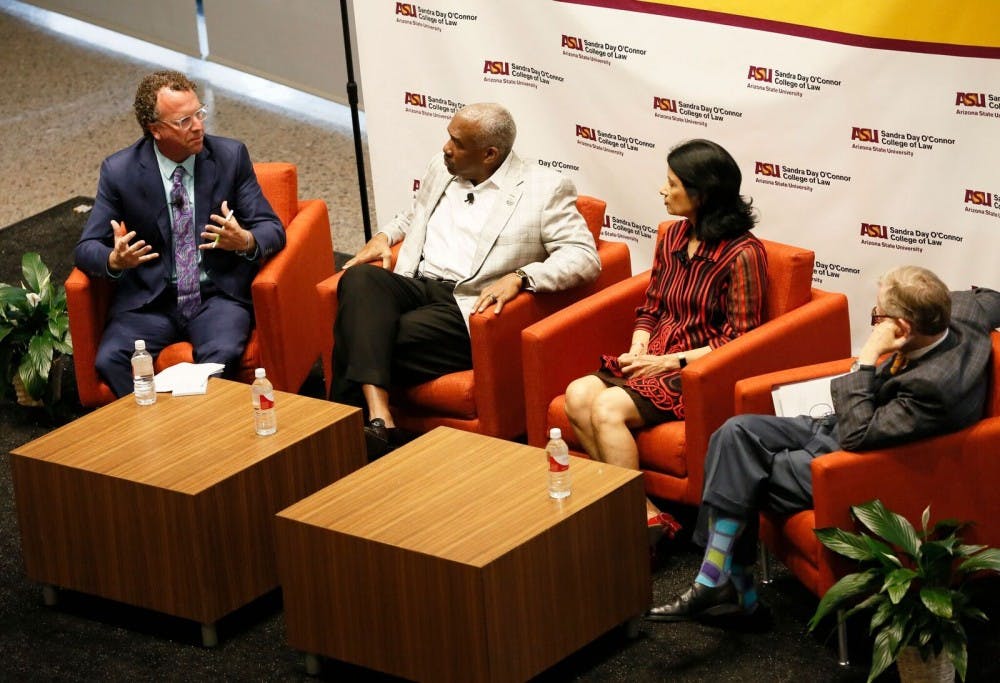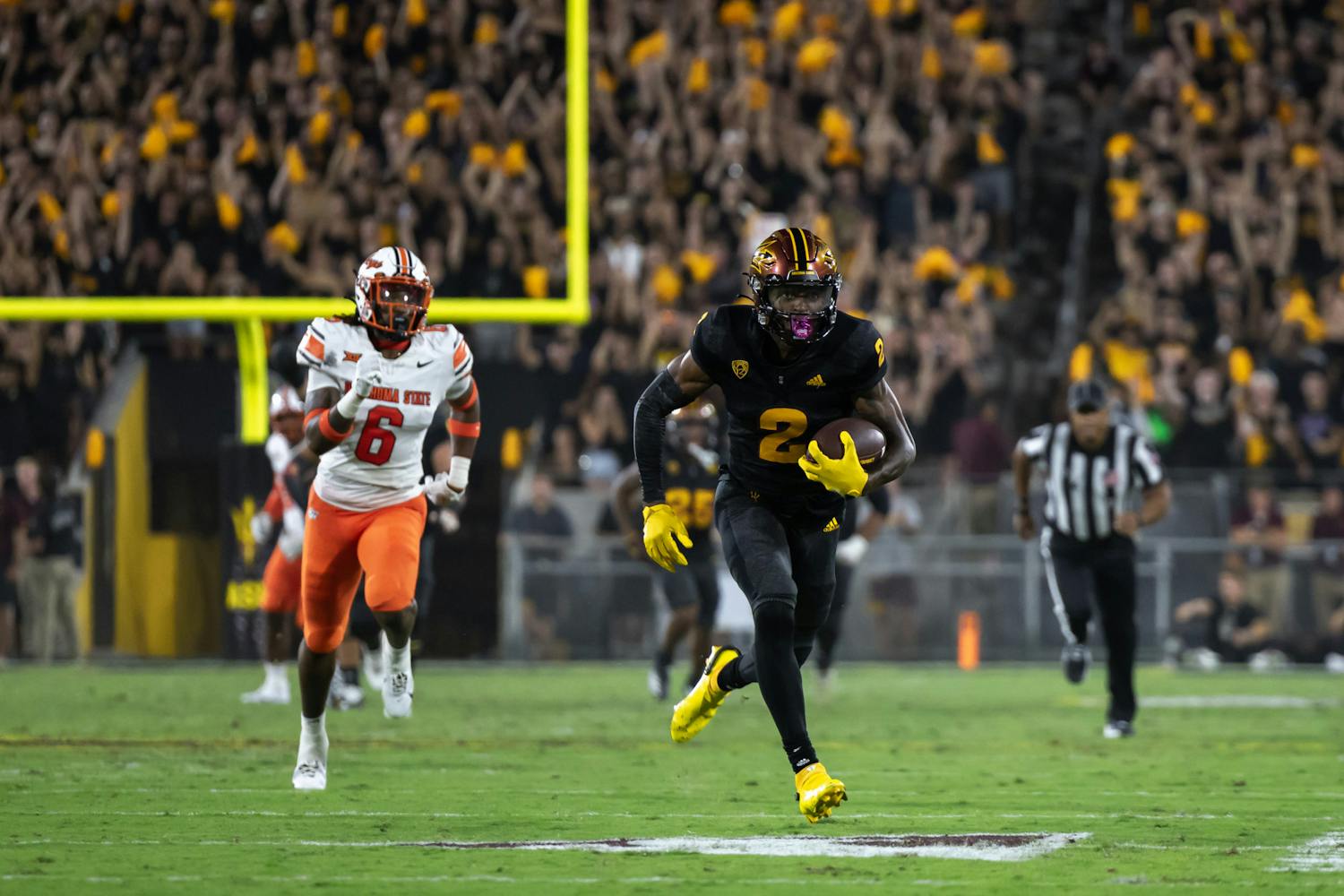While athletic programs outside of the Power Five conferences often play schools within, the two of them are by no means on a level playing field.
ASU is a member of the Power Five in the Pac-12 conference and played two schools outside the Power Five this past season: NAU and the University of Texas, San Antonio (UTSA.) They were only able to beat UTSA by four points.
On April 3, a combination of conference commissioners, athletic directors and university presidents gathered at ASU’s Sandra Day O’Connor College of Law for an NCAA symposium titled “Full Court Press: Media, Autonomy and the Future of College Sports.”
At the event, hosted by the Sports Law and Business Program, representatives discussed a number of topics concerning the future of the college sports industry, including the revenue gap between Power Five schools and non-Power Five schools.
The Power Five consists of the Atlantic Coast Conference (ACC), Southeastern Conference (SEC), the Big Ten, the Big 12, the Pac-12 and Notre Dame. Meanwhile, the Group of Five containing smaller Division I schools includes the American, Conference USA, Mid-American, Mountain West and the Sun Belt.
Independent Division I schools that compete alongside the Group of Five are Brigham Young University, the Army and the University of Massachusetts. With the enormous financial gap between schools in the Power Five conferences and schools outside of them, it is difficult for the latter to remain competitive contenders as the former flourishes in revenue.
“Power Five schools are like the major leagues and everybody else is like the minor leagues,” said Andrew Zimbalist, economics professor at Smith College. “Power Five schools have their own original sports networks that generate somewhere in the neighborhood of $20 million per team, per year.”
According to a report by Outside the Lines, schools in the Power Five had $43 million more in average overall revenue compared to schools in the Group of Five. This already staggering number increased to $65 million in 2015.
ASU's athletic department profited $94.6 million during the 2016 fiscal year in revenues, a 12 percent increase from last year.
“(Power Five schools) have larger national television contracts, they have larger stadiums with more revenue-generating enclosurements like luxury boxes,” Zimbalist said. “They can charge more for their tickets and they get corporate sponsorship dollars, so all of those things together create a very sharp division between the Power Five and everybody else.”
This revenue gap is causing schools to struggle to keep up with Power Five schools and their ability to provide luxury amenities for their athletic departments. The disparity will only increase as it has for years, which will continue to hurt other programs’ chances of ever becoming as dominant as the Power Five schools have always been.
“The worst repercussions are that schools outside the Power Five, however much they might desire it or try, are not going to be able to become big-time,” Zimbalist said. “So far as they make investments, like spending a lot of money on coaches or upgrading their sports facilities, they’re going to be bad investments. They’re not going to work, they’re not going to pay off.”
No matter how effectively non-Power Five schools try to spend their money to create championship-worthy teams, the magnitude of the revenue gap is too much to overcome with a few seemingly-strategic investments — they need more money, and they simply don’t have it.
Especially since Power Five schools were granted autonomy in 2014, meaning that they can write many of their own rules regarding things like cost-of-attendance stipends and recruiting rules, the conferences have more power than ever.
A number of Group of Five officials are advocating for there to be a playoff tailored to teams outside of the Power Five, citing the inability for these teams to ever be able to win a championship game in the past, present and future.
The last time a collegiate football program outside of one of the Power Five conferences won the national championship was Brigham Young University in 1984, over three decades ago.
Although the best way to solve this problem is unclear, if efforts aren’t made to lessen this financial disparity, dozens of teams will have an increasingly impossible chance of keeping up and winning championships.
“There are lots of things that need to be done with college sports,” Zimbalist said. “The gap between the Power Five and everybody else is just one of many profound problems and contradictions in college sports.”
Reach the columnist at alexwolfe3098@gmail.com or follow @alexandrawolfe_ on Twitter.
Editor’s note: The opinions presented in this column are the author’s and do not imply any endorsement from The State Press or its editors.
Want to join the conversation? Send an email to opiniondesk.statepress@gmail.com. Keep letters under 500 words and be sure to include your university affiliation. Anonymity will not be granted.
Like The State Press on Facebook and follow @statepress on Twitter.




